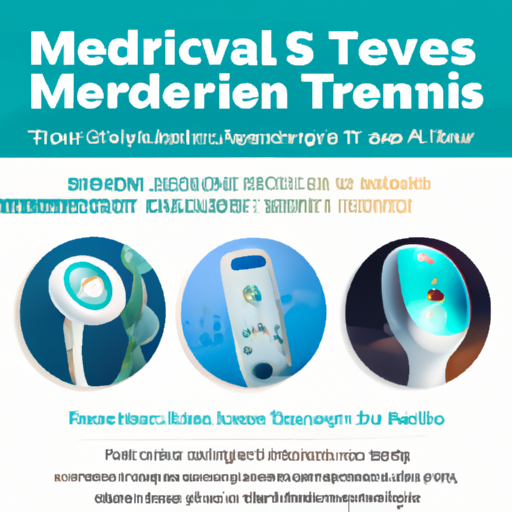Pharmaceutical Industry Trends
Whether you’re a healthcare professional, an investor, or simply interested in the world of medicine, keeping up with the latest trends in the pharmaceutical industry is crucial. In this article, we will explore the current developments and advancements that are shaping the future of this ever-evolving field. From innovative treatments and drug discovery techniques to regulatory changes and market shifts, we will delve into the pharmaceutical industry trends that are shaping the landscape and revolutionizing healthcare as we know it.
Table of Contents
Pharmaceutical Industry Trends
The pharmaceutical industry is constantly evolving, driven by numerous factors such as technological advancements, changes in healthcare policies, and shifts in consumer needs. To remain competitive and meet the demands of the market, pharmaceutical companies must stay abreast of the latest trends and adapt their strategies accordingly. In this article, we will explore some of the key trends shaping the pharmaceutical industry today.

1. Technology and Innovation
1.1 Artificial Intelligence
Artificial Intelligence (AI) is revolutionizing the pharmaceutical industry by streamlining various processes and improving efficiencies. AI-powered algorithms can analyze large volumes of data, identify patterns, and make predictions, enabling faster drug discovery and development. Moreover, AI is being used for personalized medicine, drug safety monitoring, and disease management.
1.2 Robotics and Automation
Robotics and automation are transforming various aspects of the pharmaceutical industry, from manufacturing and packaging to drug dispensing and laboratory testing. Robots can work faster, more accurately, and operate 24/7, reducing the risk of human errors and increasing productivity. Automation also helps to streamline supply chain management and reduce costs.
1.3 Big Data Analytics
The pharmaceutical industry generates vast amounts of data, and harnessing this data can provide valuable insights for drug development, clinical trials, and patient care. Big data analytics can improve decision-making, enable predictive modeling, and optimize resource allocation. By utilizing advanced analytics, pharmaceutical companies can identify new target markets, tailor their marketing strategies, and enhance patient outcomes.
1.4 Blockchain Technology
Blockchain technology has gained significant attention in recent years, and its potential applications in the pharmaceutical industry are vast. By utilizing blockchain, companies can improve supply chain transparency, reduce counterfeit drugs, and enhance patient safety. Blockchain can also enable secure sharing of patient data, facilitate clinical trials, and streamline regulatory compliance.
2. Biopharmaceuticals
2.1 Growth in Biologic Drugs
Biologic drugs, also known as biologics, are complex molecules derived from living organisms and are increasingly being used to treat a range of diseases. Advances in biotechnology have led to the development of biologic drugs that are more effective and have fewer side effects than traditional pharmaceuticals. The market for biologics is rapidly expanding, driven by factors such as increasing prevalence of chronic diseases and a growing aging population.
2.2 Personalized Medicine
Personalized medicine, also known as precision medicine, involves tailoring medical treatments to individual patients based on their genetic makeup, lifestyle, and other factors. Advances in genomics and genetic testing have made it possible to identify biomarkers and genetic variations that can influence drug response and disease progression. This allows healthcare providers to develop targeted therapies and optimize treatment outcomes for patients.
2.3 Biosimilars
Biosimilars are the generic version of biologic drugs and offer a more affordable alternative to patients. As the patents for many biologics expire, the market for biosimilars is expected to grow significantly. Biosimilars can potentially reduce healthcare costs and improve access to life-saving medications. However, ensuring the safety and efficacy of biosimilars remains a challenge and requires rigorous regulatory oversight.
3. Drug Pricing and Affordability
3.1 Rising Drug Prices
The escalating cost of prescription drugs has become a major concern for patients, healthcare providers, and policymakers. Rising drug prices can be attributed to various factors, including research and development costs, regulatory requirements, and market dynamics. The high prices of certain specialty drugs have raised issues of affordability and access, particularly for patients with chronic conditions.
3.2 Generic Drug Competition
Generic drugs are identical or bioequivalent versions of brand-name drugs that offer the same therapeutic benefits at a lower cost. Increasing competition from generic drugs can help drive down prices and improve access to affordable medications. However, challenges such as patent protection issues, complex regulatory requirements, and market dynamics can hinder the availability of generic alternatives.
3.3 Government Regulation
Government regulations play a crucial role in ensuring drug safety and efficacy, as well as promoting fair pricing and accessibility. Governments around the world are implementing various measures to address concerns related to drug pricing and affordability. These include price controls, bulk purchasing programs, and policies to encourage competition and transparency in the pharmaceutical market.
4. Shift towards Precision Medicine
4.1 Genomics and Genetic Testing
Advances in genomics and genetic testing have opened up new possibilities for personalized medicine. Genetic testing can help identify individuals at risk for certain diseases, predict drug response, and guide treatment decisions. Pharmaceutical companies are increasingly incorporating genomic data into drug development processes to create targeted therapies that are more effective and have fewer side effects.
4.2 Targeted Therapies
Targeted therapies focus on specific molecular targets involved in the development and progression of diseases. By targeting these specific mechanisms, targeted therapies can offer more effective treatments with fewer side effects compared to traditional, broad-spectrum medications. The development of targeted therapies requires a deep understanding of disease biology and the mechanisms involved, driving the need for advanced research and collaboration.
4.3 Pharmacogenomics
Pharmacogenomics involves studying how an individual’s genetic makeup influences their response to medications. By analyzing a patient’s genetic profile, healthcare providers can better predict drug response and choose the most appropriate medication and dosage for each individual. Pharmacogenomics can improve treatment outcomes, reduce adverse drug reactions, and enhance patient safety.
5. Globalization of the Pharmaceutical Industry
5.1 Emerging Markets
The pharmaceutical industry is witnessing significant growth in emerging markets, driven by factors such as increasing population, rising disposable incomes, and improved healthcare infrastructure. Emerging markets offer new opportunities for pharmaceutical companies to expand their market reach and tap into a growing patient population. However, operating in these markets also presents challenges, including regulatory complexities and market dynamics.
5.2 Outsourcing and Contract Manufacturing
Pharmaceutical companies are increasingly outsourcing various aspects of their operations, including research and development, clinical trials, and manufacturing. Outsourcing can provide cost advantages, access to specialized expertise, and flexibility. Contract manufacturing allows companies to focus on core competencies while leveraging the capabilities and capacity of external partners. However, managing outsourcing relationships and ensuring quality and compliance can be challenging.
5.3 Collaborations and Partnerships
Collaborations and partnerships are becoming more prevalent in the pharmaceutical industry as companies seek to share resources, expertise, and risks. Collaborations between pharmaceutical companies, research institutions, and healthcare providers can accelerate drug discovery and development, drive innovation, and improve patient care. Collaboration is particularly important in complex areas such as oncology, where multiple stakeholders with diverse expertise need to work together.
6. Regulatory Challenges and Drug Approval Process
6.1 Stringent Regulatory Standards
The pharmaceutical industry is subject to stringent regulatory standards to ensure the safety, efficacy, and quality of drugs. Regulatory agencies such as the Food and Drug Administration (FDA) in the United States and the European Medicines Agency (EMA) in Europe play a crucial role in reviewing and approving new medications. Meeting regulatory requirements can be a complex and time-consuming process, requiring extensive testing, documentation, and compliance.
6.2 Drug Safety and Efficacy
Ensuring the safety and efficacy of medications is of utmost importance in the pharmaceutical industry. Clinical trials are conducted to assess the safety profile, efficacy, and side effects of new drugs before they can be approved for marketing. Continuous monitoring of medication safety is also essential post-approval. Adverse drug reactions and other safety concerns can have significant implications for patients and the reputation of pharmaceutical companies.
6.3 Expedited Approval Programs
In certain cases, regulatory agencies offer expedited approval programs to accelerate the availability of potentially life-saving medications. These programs aim to provide patients with access to drugs that address unmet medical needs in a timely manner. Expedited approval programs may involve streamlined review processes, accelerated timelines, or conditional approvals, subject to further post-marketing data collection.
7. Focus on Specialty Drugs
7.1 Growing Importance of Specialty Pharmaceuticals
Specialty pharmaceuticals are medications that are used to treat complex, chronic, or rare diseases. These drugs often require specialized handling, administration, and monitoring, and are usually more expensive than traditional pharmaceuticals. The market for specialty drugs is growing rapidly, driven by advancements in biotechnology, an aging population, and the increasing prevalence of chronic diseases.
7.2 High Cost and Limited Access
One of the main issues associated with specialty drugs is their high cost, which can pose challenges for patients, healthcare providers, and payers. The high prices of specialty drugs can lead to limited access, particularly for patients without adequate insurance coverage or financial resources. This raises concerns about affordability, as patients may be unable to receive the medications they need to manage their conditions effectively.
7.3 Orphan Drugs
Orphan drugs are medications developed to treat rare diseases that affect a small number of patients. Due to the small patient population, the development and production costs of orphan drugs are often high. To incentivize the development of orphan drugs, governments around the world have implemented regulatory and financial incentives, such as extended exclusivity periods and tax credits. The orphan drug market presents both opportunities and challenges for pharmaceutical companies, balancing the need for innovative treatments with economic viability.
8. Digital Health and Telemedicine
8.1 Adoption of Digital Solutions
Digital health technologies, such as electronic medical records, mobile health applications, and wearable devices, are transforming healthcare delivery and patient engagement. Pharmaceutical companies are increasingly exploring digital solutions to improve patient medication adherence, track real-world outcomes, and gather real-time data for research and development purposes. Digital health technologies can also facilitate remote monitoring, virtual consultations, and telemedicine services.
8.2 Remote Monitoring and Telehealth
Remote monitoring and telehealth technologies enable healthcare providers to monitor patients remotely, collect health data, and provide care outside of traditional clinical settings. These technologies have become particularly valuable during the COVID-19 pandemic, allowing patients to receive necessary healthcare services while minimizing the risk of exposure to the virus. Pharmaceutical companies can leverage remote monitoring and telehealth to enhance patient support and improve treatment outcomes.
8.3 AI-Assisted Diagnostics
Artificial intelligence (AI) is being increasingly used in healthcare for various applications, including diagnostics. AI-powered algorithms can analyze medical images, patient data, and clinical records to aid in the accurate diagnosis of diseases. AI-assisted diagnostics can help healthcare providers make more informed decisions, reduce diagnostic errors, and improve patient outcomes. Pharmaceutical companies are exploring AI solutions to complement their diagnostic capabilities and support precision medicine initiatives.
9. Sustainability and Environmental Impact
9.1 Green Manufacturing Practices
Pharmaceutical manufacturing has traditionally been associated with environmental concerns due to the generation of waste, energy consumption, and use of hazardous materials. However, there is a growing focus on adopting green manufacturing practices to reduce the environmental impact of the industry. This includes implementing energy-efficient technologies, recycling and reusing materials, and reducing water consumption and waste generation.
9.2 Waste Management and Recycling
Proper waste management and recycling are crucial in minimizing the environmental impact of the pharmaceutical industry. Companies are implementing comprehensive waste management programs to ensure the safe disposal of chemicals, biohazardous materials, and packaging waste. Recycling initiatives are also being introduced to reclaim valuable resources and reduce the reliance on virgin materials.
9.3 Carbon Footprint Reduction
Reducing carbon emissions and mitigating climate change are global priorities. Pharmaceutical companies are implementing strategies to reduce their carbon footprint, such as investing in renewable energy sources, optimizing transportation logistics, and adopting sustainable packaging materials. By taking proactive measures to reduce their environmental impact, pharmaceutical companies can contribute to a more sustainable future.
10. Mergers and Acquisitions
10.1 Consolidation in the Industry
Mergers and acquisitions (M&A) are common in the pharmaceutical industry as companies seek to enhance their market position, expand their product portfolio, and gain access to new markets. Consolidation can lead to increased economies of scale, improved research and development capabilities, and a broader geographic presence. However, M&A activities also pose challenges such as integrating different corporate cultures, managing intellectual property rights, and adhering to regulatory requirements.
10.2 Strategic Partnerships
Strategic partnerships between pharmaceutical companies and other stakeholders, such as research institutions, healthcare providers, and technology companies, can drive innovation and improve patient care. Partnerships can enable companies to share resources, expertise, and risks, leading to more efficient drug development processes and faster market access. Collaborative efforts can also leverage complementary strengths and accelerate the discovery and development of new therapies.
10.3 Intellectual Property Rights
Intellectual property rights (IPR) are critical in the pharmaceutical industry to protect innovative products and ensure a return on investment for drug development efforts. Patents provide exclusivity for a specified period, allowing companies to recoup research and development costs. Managing IPR is essential in a global market where counterfeit drugs and generic competition pose challenges. Maintaining a robust intellectual property strategy is crucial to staying competitive in the pharmaceutical industry.
In conclusion, the pharmaceutical industry is facing numerous trends and challenges that are shaping its future. From technological advancements and personalized medicine to regulatory compliance and sustainability, pharmaceutical companies must adapt to remain competitive and meet the needs of patients and healthcare systems. By embracing innovation, collaborating with stakeholders, and prioritizing patient-centric approaches, the pharmaceutical industry can continue to drive advancements in healthcare and improve patient outcomes.





